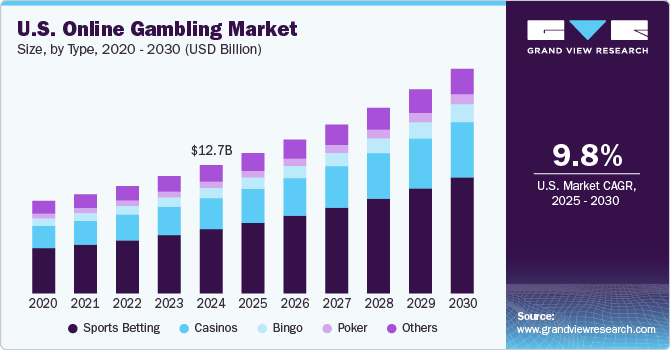Gambling Statistics Usa

Today, let's look at the relationship between gambling and income in America.
Lucky for us, the IRS has compiled data which shows that Americans in all income classes (even the top one percent) love to gamble. Yes, in 2016 (filing year 2017), 1.31% of Americans were lucky enough to have to pay taxes on gambling winnings.
United States Definition of Gambling Winnings. In the United States, gambling winnings are reported on Form W-2G. There are very strict instructions on when to file. The things that trigger your need to file a form W-2G: $1,200 or more in gambling winnings from bingo or slot machines. College Gambling. Gambling addiction statistics show people between the ages 20 and 30 have the highest rates of problem gambling. The risk of developing a gambling addiction more than doubles for young adults in college settings. An estimated six percent of American college students struggle with gambling problems. In 2002, the United States Court of Appeals for the Fifth Circuit ruled the Federal Wire Act prohibits sports betting, but not necessarily online gambling. However, the US Department of Justice disagreed, claiming all online gambling is illegal in the US, and that advertising online gambling is akin to aiding and abetting a crime.
Let's look at gambling stats in America by income.

Percentage of Tax Returns Gambling Winnings, By Income
For this first chart the percentage represents the percentage of taxable tax returns in each income bracket which reported gambling winnings.
Percentage of All Reported Gamblers by Income Bracket
Gambling Statistics Las Vegas
Admittedly, this chart is more confusing. We're showing the percentage of all tax returns each bracket represents and contrasting it with the percentage of all taxed winning gamblers.
| Income Bracket (2016) | Percentage of Tax Returns | Percentage of Winning Gamblers |
| No adjusted gross income | 1.393% | 1.29% |
| $1 under $5,000 | 6.647% | 2.15% |
| $5,000 under $10,000 | 7.319% | 3.36% |
| $10,000 under $15,000 | 7.876% | 3.42% |
| $15,000 under $20,000 | 7.260% | 4.50% |
| $20,000 under $25,000 | 6.553% | 5.31% |
| $25,000 under $30,000 | 5.915% | 3.87% |
| $30,000 under $40,000 | 10.041% | 8.08% |
| $40,000 under $50,000 | 7.762% | 7.47% |
| $50,000 under $75,000 | 13.459% | 17.51% |
| $75,000 under $100,000 | 8.634% | 13.61% |
| $100,000 under $200,000 | 12.549% | 20.76% |
| $200,000 under $500,000 | 3.715% | 6.87% |
| $500,000 under $1,000,000 | 0.595% | 1.16% |
| $1,000,000 under $1,500,000 | 0.128% | 0.27% |
| $1,500,000 under $2,000,000 | 0.052% | 0.12% |
| $2,000,000 under $5,000,000 | 0.074% | 0.18% |
| $5,000,000 under $10,000,000 | 0.018% | 0.04% |
| $10,000,000 or more | 0.011% | 0.02% |
United States Definition of Gambling Winnings
In the United States, gambling winnings are reported on Form W-2G. There are very strict instructions on when to file.
The things that trigger your need to file a form W-2G:
- $1,200 or more in gambling winnings from bingo or slot machines
- $1,500 or more in proceeds (the amount of winnings minus the amount of the wager) from keno
- More than $5,000 in winnings (reduced by the wager or buy-in) from a poker tournament
- $600 or more in gambling winnings (except winnings from bingo, keno, slot machines, and poker tournaments) and the payout is at least 300 times the amount of the wager
- Any other gambling winnings subject to federal income tax withholding (technically, you must report from the first dollar)
One problem with this definition we'll state upfron: it only catches the winners. (Perhaps some brackets are unlucky? Perhaps they are playing games with payouts less than $600?)
There is bias in our data below towards larger bets, which might be expected to come from people with more income. It would be nice to be able to strip table games out of this data and leave animal racing, slot machines, and lotteries - but we play the hand we're dealt!
Gambling Addiction Statistics 2016
Gambling by Income: Interesting Stuff!

World Gambling Statistics

Problem Gambling Statistics
So there you have it. In the United States, there are more winning gamblers among the affluent than among the poor.
It's probably not fair to call gambling a 'poor tax', unless you still think we defined away 'lottery' too easily in this article. The largest percentage of gamblers in America make between $50,000 and $200,000. We say that because – presumably – the brackets with the most winners also have the most gambling overall (the most losers as well, that is).
Gambling Statistics 2016
So there you have it. 7-figure folks are gambling at more than 2x their proportion of the total household representation. And moderate incomes up to $200,000 are gambling the most overall.
Is it a bullish sign when our $1,000,000 - $1,500,000 and $2,000,000 - $5,000,000 earners are gambling at such a clip? How do you think this would change if we took out table games?
Gambling Statistics Us
Do you gamble? How does it affect your personal finances?